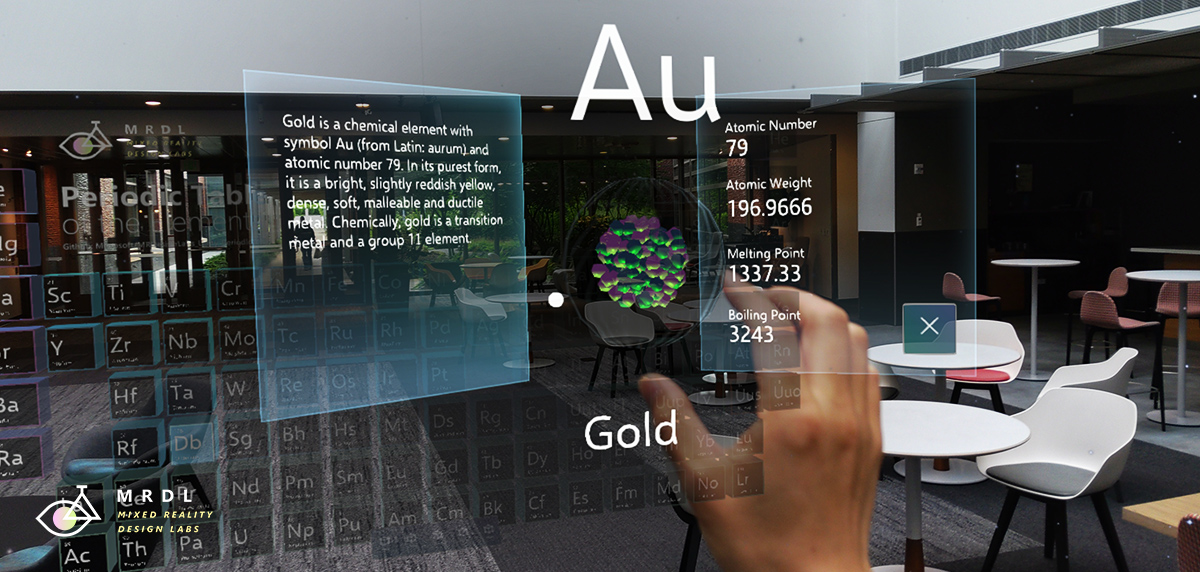
What is the Mixed Reality Toolkit
MRTK-Unity is a Microsoft driven project that provides a set of components and features to accelerate cross-platform MR app development in Unity. Here are some things MRTK does:
- Provides the basic building blocks for Unity development on HoloLens, Windows Mixed Reality, and OpenVR.
- Enables rapid prototyping via in-editor simulation that allows you to see changes immediately.
- Designed as an extensible framework that provides developers ability to swap out core components.
- Supports a wide range of platforms, including
- Microsoft HoloLens
- Microsoft HoloLens 2
- Windows Mixed Reality headsets
- OpenVR headsets (HTC Vive / Oculus Rift)
Getting Started with MRTK
Getting Started |
MRTK Overview |
Feature Guides |
API Reference |
|---|
Build Status
| Branch | CI Status | Docs Status |
|---|---|---|
mrtk_development |
Required Software
 Windows SDK 18362+ Windows SDK 18362+ |
 Unity 2018.4.x Unity 2018.4.x |
 Visual Studio 2019 Visual Studio 2019 |
 Simulator (optional) Simulator (optional) |
|---|---|---|---|
| To build apps with MRTK v2, you need the Windows 10 May 2019 Update SDK. To run apps for immersive headsets, you need the Windows 10 Fall Creators Update. |
The Unity 3D engine provides support for building mixed reality projects in Windows 10 | Visual Studio is used for code editing, deploying and building UWP app packages | The Emulators allow you test your app without the device in a simulated environment |
Feature Areas
UI and Interaction Building blocks
 Button Button |
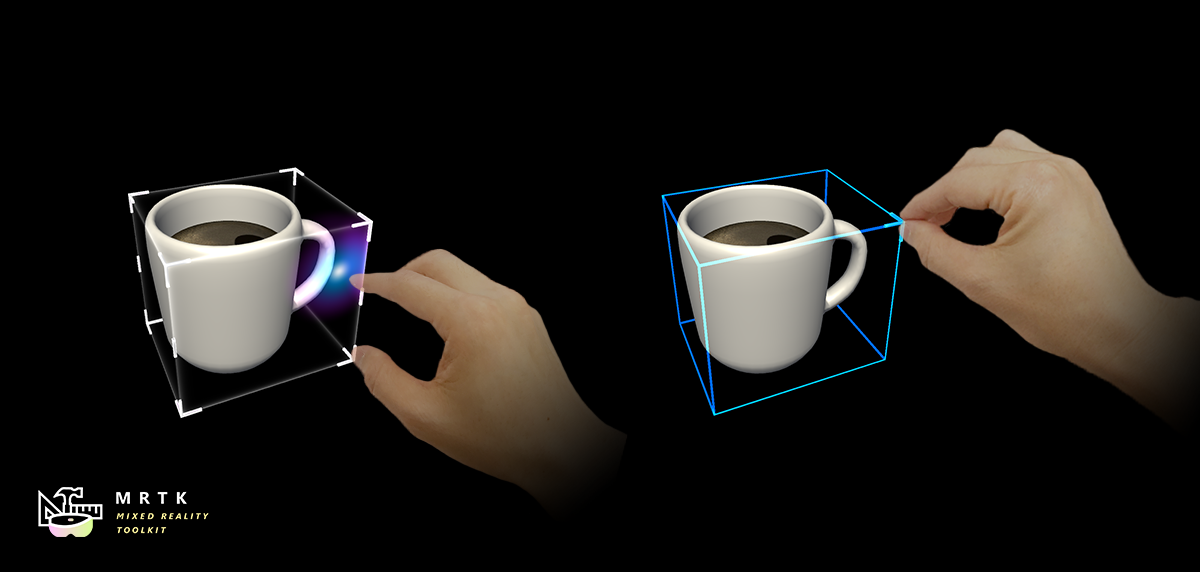 Bounding Box Bounding Box |
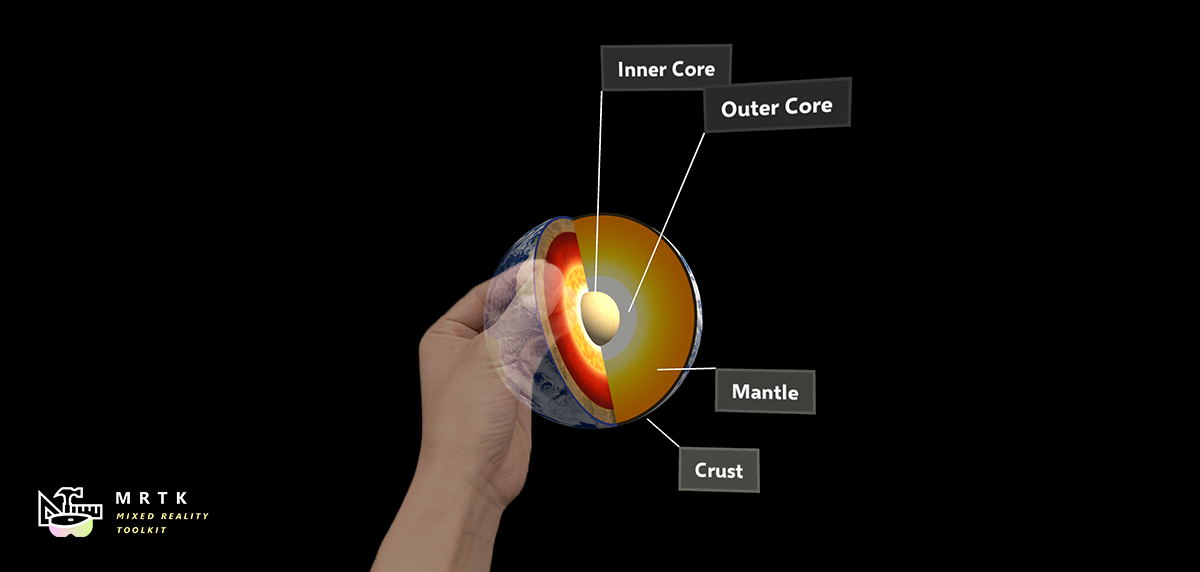 Manipulation Handler Manipulation Handler |
|---|---|---|
| A button control which supports various input methods including HoloLens 2's articulated hand | Standard UI for manipulating objects in 3D space | Script for manipulating objects with one or two hands |
 Slate Slate |
 System Keyboard System Keyboard |
 Interactable Interactable |
| 2D style plane which supports scrolling with articulated hand input | Example script of using the system keyboard in Unity | A script for making objects interactable with visual states and theme support |
 Solver Solver |
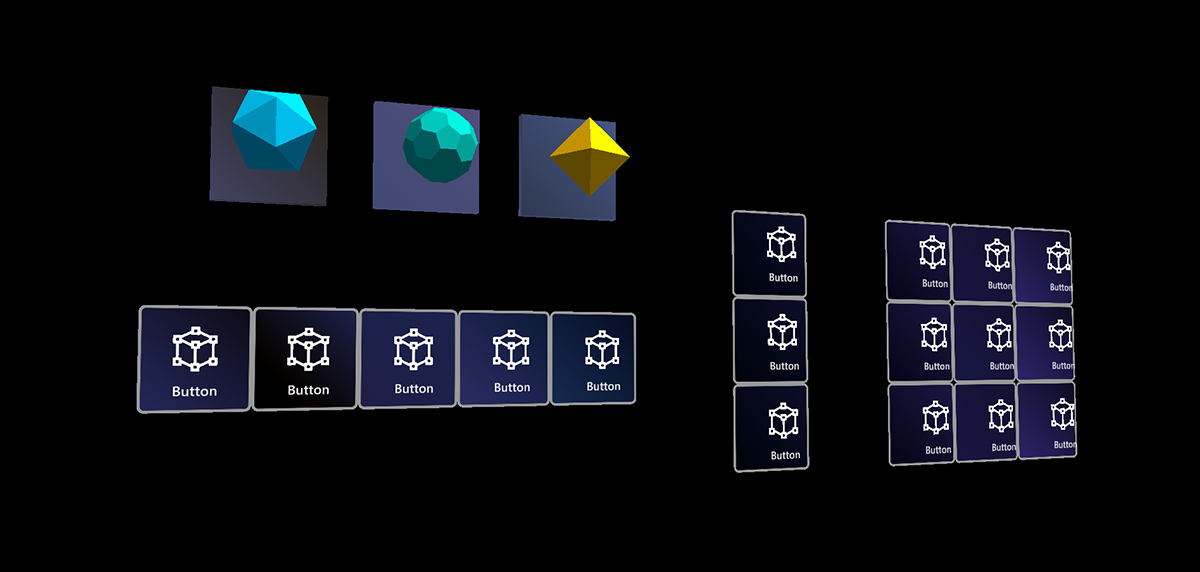 Object Collection Object Collection |
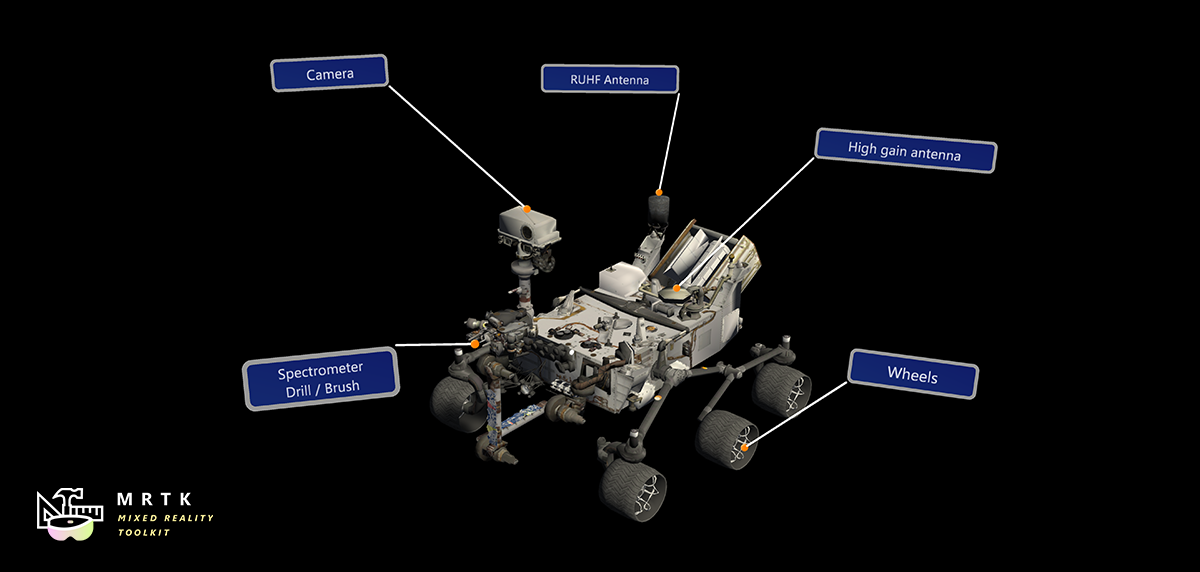 Tooltip Tooltip |
| Various object positioning behaviors such as tag-along, body-lock, constant view size and surface magnetism | Script for laying out an array of objects in a three-dimensional shape | Annotation UI with flexible anchor/pivot system which can be used for labeling motion controllers and objects |
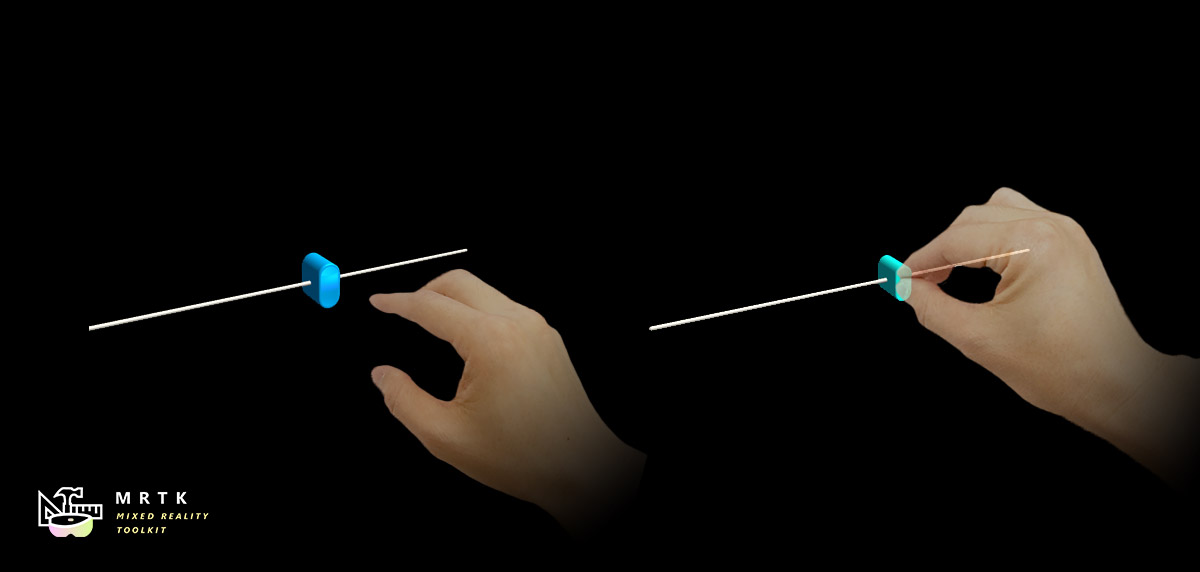 Slider Slider |
 MRTK Standard Shader MRTK Standard Shader |
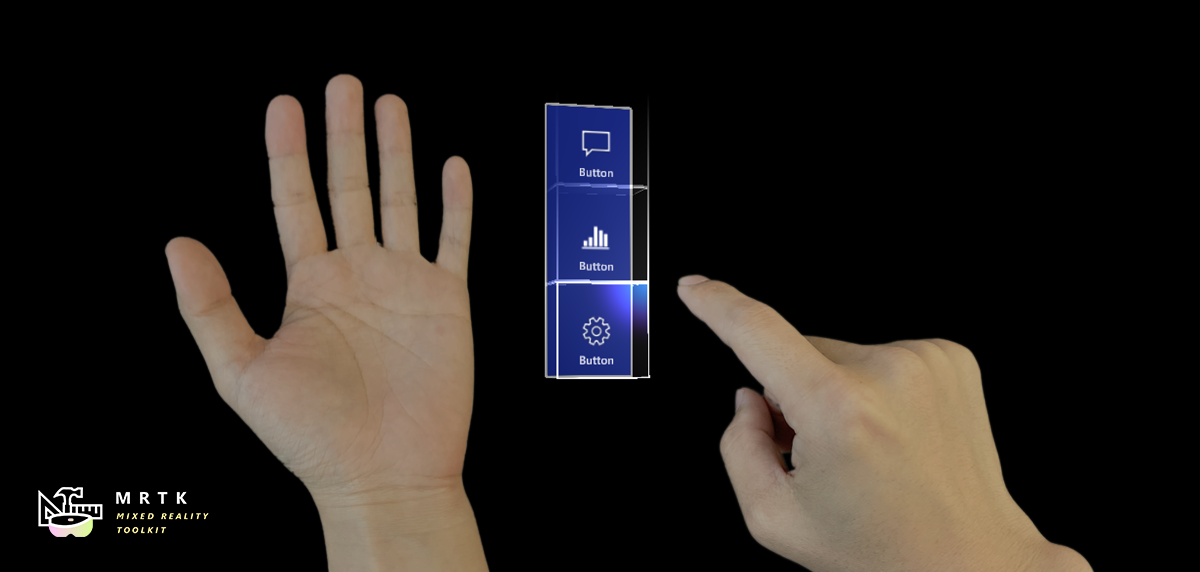 Hand Menu Hand Menu |
| Slider UI for adjusting values supporting direct hand tracking interaction | MRTK's Standard shader supports various Fluent design elements with performance | Hand-locked UI for quick access, using Hand Constraint Solver |
 App Bar App Bar |
 Pointers Pointers |
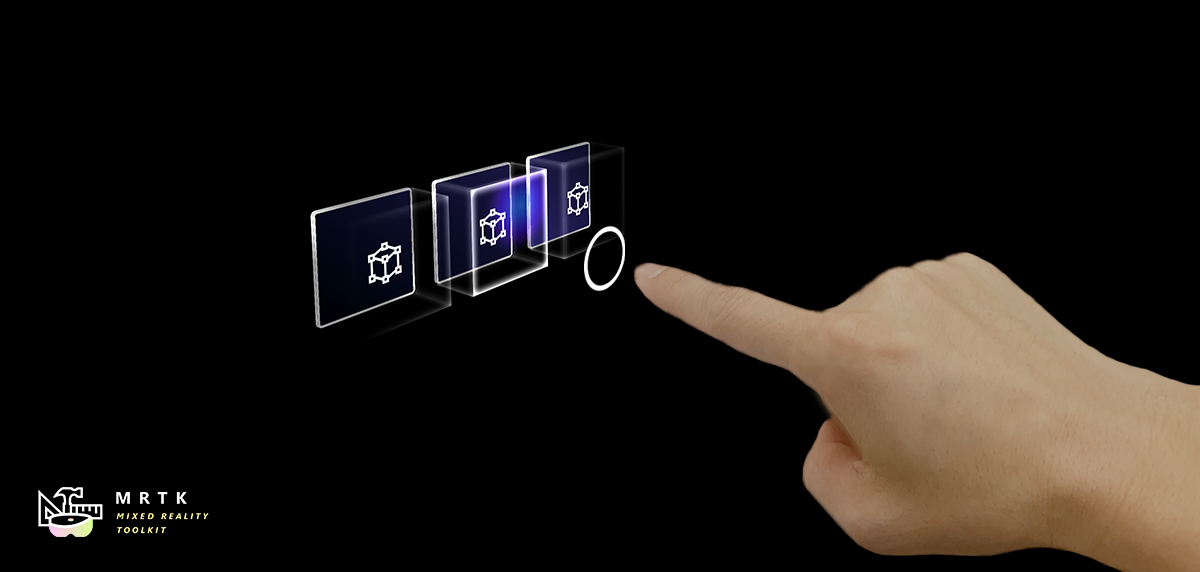 Fingertip Visualization Fingertip Visualization |
| UI for Bounding Box's manual activation | Learn about various types of pointers | Visual affordance on the fingertip which improves the confidence for the direct interaction |
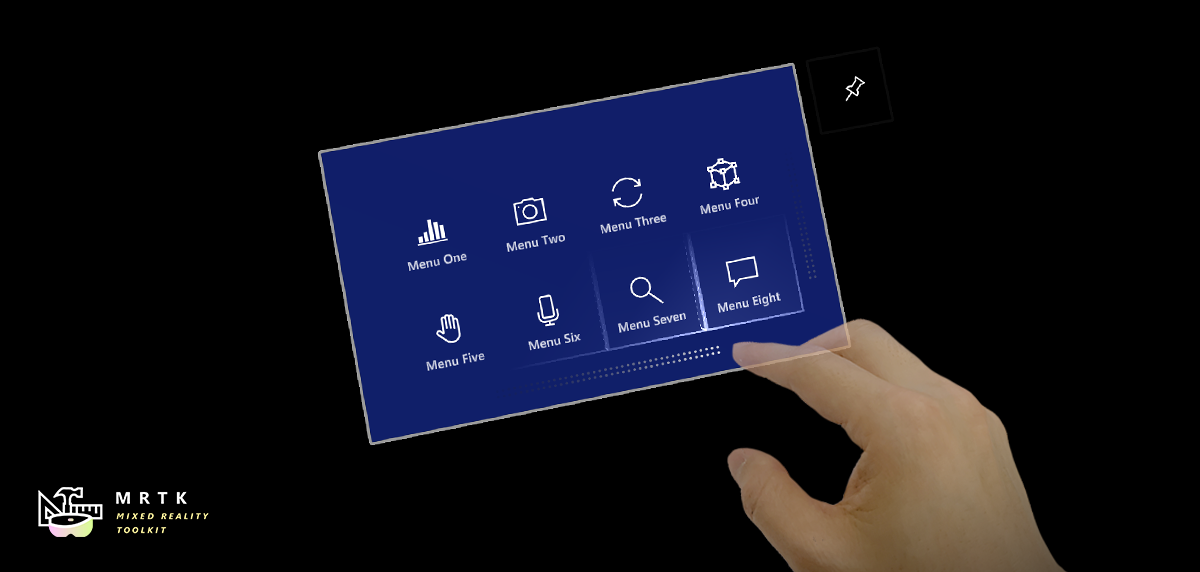 Near Menu Near Menu |
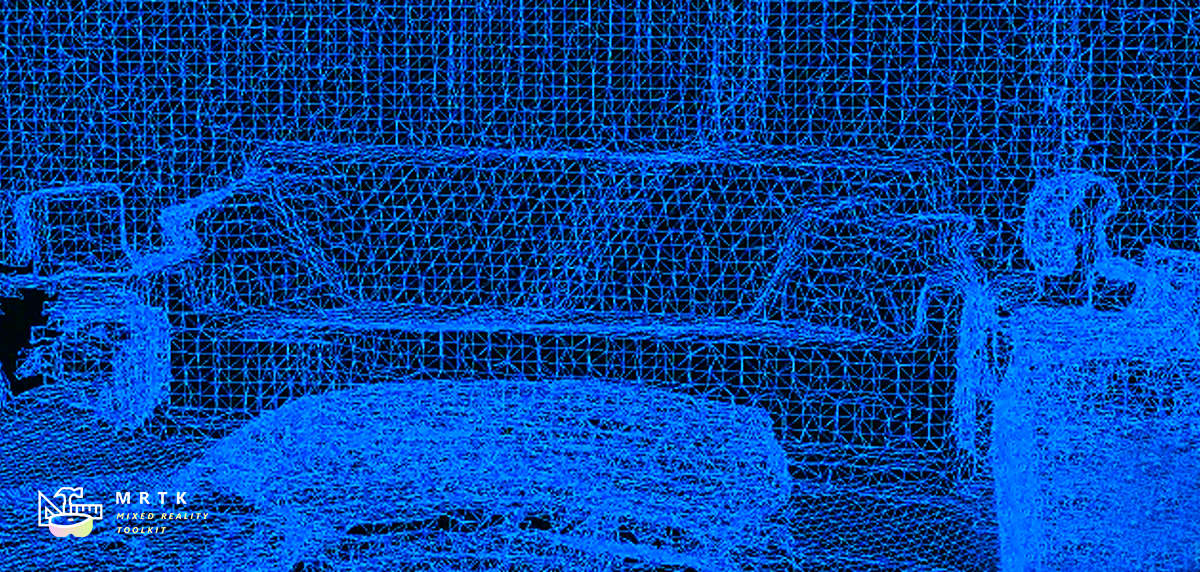 Spatial Awareness Spatial Awareness |
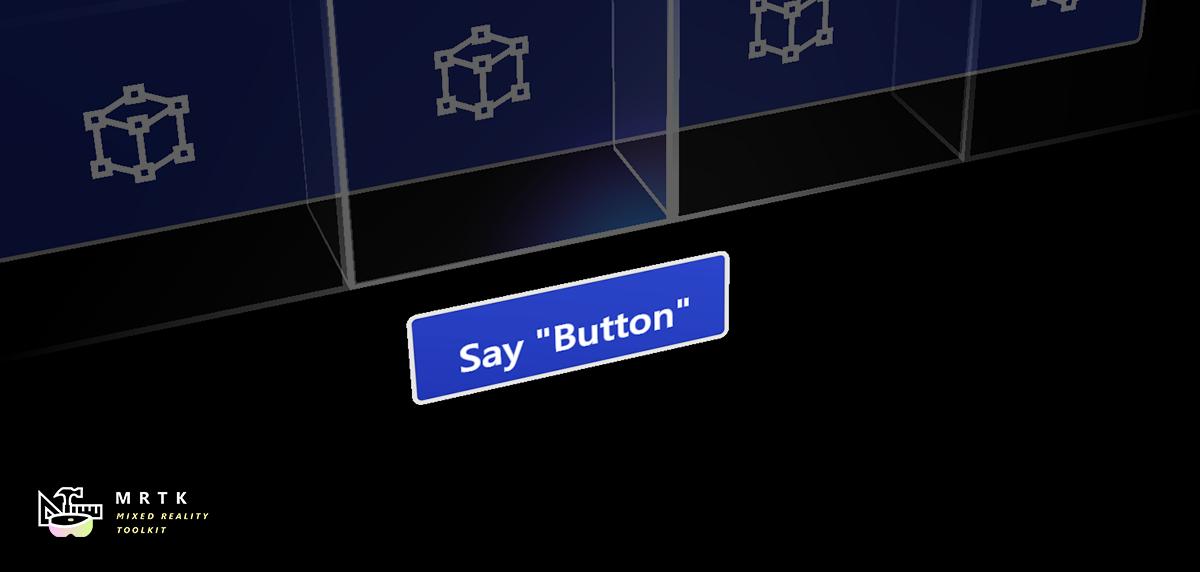 Voice Command Voice Command |
| Demonstrates how to use Solver to attach objects to the hand joints | Make your holographic objects interact with the physical environments | Scripts and examples for integrating speech input |
| Combine eyes, voice and hand input to quickly and effortlessly select holograms across your scene | Learn how to auto scroll text or fluently zoom into focused content based on what you are looking at | Examples for logging, loading and visualizing what users have been looking at in your app |
Tools
| Automate configuration of Mixed Reality projects for performance optimizations | Analyze dependencies between assets and identify unused assets | Configure and execute end-to-end build process for Mixed Reality applications | Record and playback head movement and hand tracking data ins editor |
Example Scenes
Explore MRTK's various types of interactions and UI controls in this example scene.
You can find other example scenes under Assets/MixedRealityToolkit.Examples/Demos folder.
MRTK Examples Hub
With MRTK Examples Hub, you can try various example scenes in MRTK. You can find pre-built app packages for HoloLens(x86), HoloLens 2(ARM), and Windows Mixed Reality immersive headsets(x64) under Release Assets folder. Use the Windows Device Portal to install apps on HoloLens.
See Examples Hub README page to learn about the details on creating multi-scene hub with MRTK's scene system and scene transition service.
Sample App
Periodic Table of the Elements is an open-source sample app which demonstrates how to use MRTK's input system and building blocks to create an app experience for HoloLens and Immersive headsets. Read the porting story: Bringing the Periodic Table of the Elements app to HoloLens 2 with MRTK v2
Engage with the Community
Join the conversation around MRTK on Slack.
Ask questions about using MRTK on Stack Overflow using the MRTK tag.
Search for known issues or file a new issue if you find something broken in MRTK code.
Join our weekly community shiproom to hear directly from the feature team. (link coming soon)
Deep dive into project plan and learn how you can contribute to MRTK in our wiki.
For issues related to Windows Mixed Reality that aren't directly related to the MRTK, check out the Windows Mixed Reality Developer Forum.
This project has adopted the Microsoft Open Source Code of Conduct. For more information see the Code of Conduct FAQ or contact opencode@microsoft.com with any additional questions or comments.
Useful resources on the Mixed Reality Dev Center
| Learn to build mixed reality experiences for HoloLens and immersive headsets (VR). | Get design guides. Build user interface. Learn interactions and input. | Get development guides. Learn the technology. Understand the science. | Get your app ready for others and consider creating a 3D launcher. |
Useful resources on Azure
Spatial Anchors |
||
|---|---|---|
| Spatial Anchors is a cross-platform service that allows you to create Mixed Reality experiences using objects that persist their location across devices over time. | Discover and integrate Azure powered speech capabilities like speech to text, speaker recognition or speech translation into your application. | Identify and analyze your image or video content using Vision Services like computer vision, face detection, emotion recognition or video indexer. |
Learn more about the MRTK Project
You can find our planning material on our wiki under Project Management Section. You can always see the items the team is actively working on in the Iteration Plan issue.
How to Contribute
View the How To Contribute wiki page for the most up to date instructions on contributing to the Mixed Reality Toolkit!
For details on the different branches used in the Mixed Reality Toolkit repositories, check this Branch Guide here.


